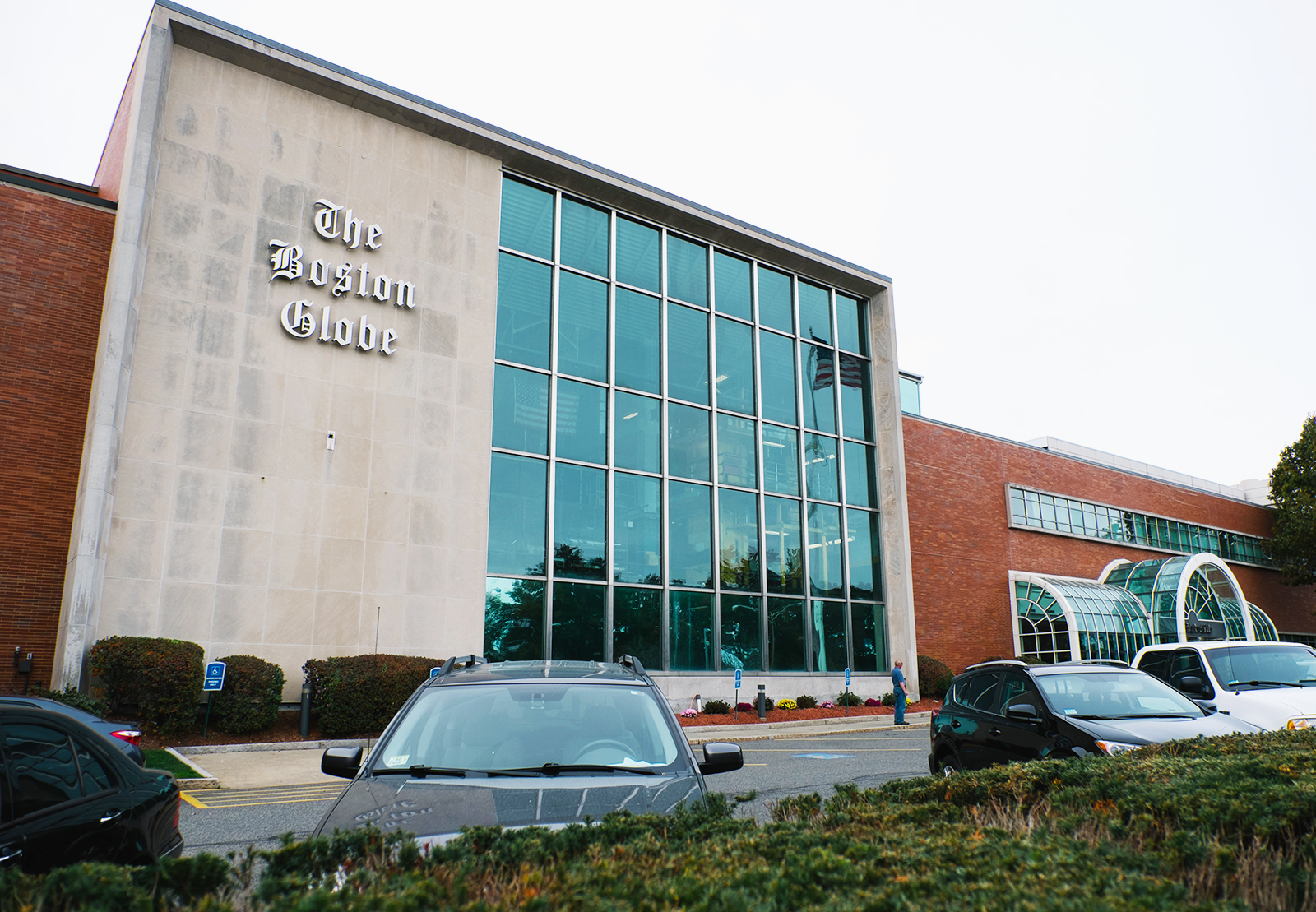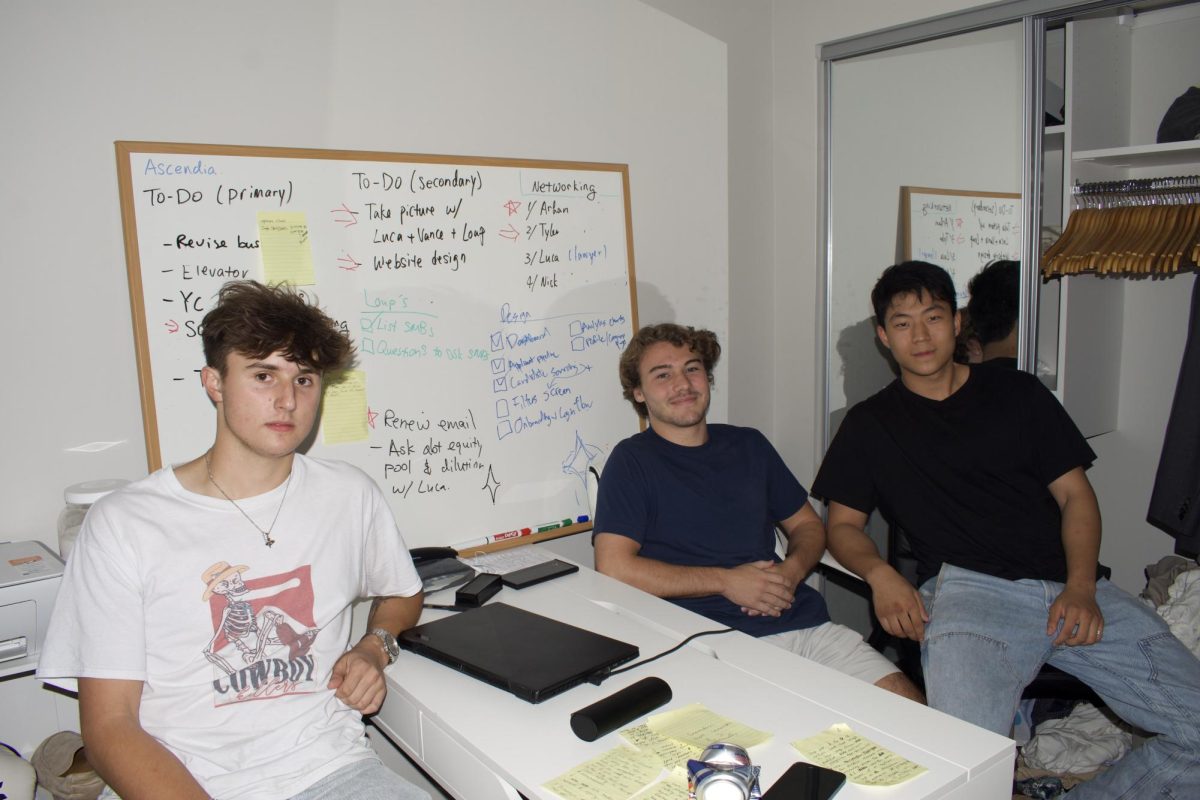[vc_row][vc_column][vc_column_text]

When Sarah Roberts started working as a metro correspondent for The Boston Globe in July, she overheard her higher-ups discussing recent buyouts and upcoming layoffs. More recently, Roberts and her colleagues have noticed something different. Desks were cleared of yellowing newspapers, computer monitors were removed and picture frames were pulled from the walls of the copy editing department’s workspace.
[/vc_column_text][/vc_column][/vc_row][vc_row][vc_column][vc_column_text]
In the past month, the Globe laid off nearly two dozen staff members in addition to the 17 who accepted a recent buyout. A majority of the layoffs came from the copy desk, which raises concern over the future of careers in traditional journalism in the landscape of changing media.
—
Lou Ureneck, a journalism professor in the College of Communication and former deputy managing editor at The Philadelphia Inquirer, said the driving force behind the layoffs was business, not journalism.
“The challenge now for news organizations isn’t journalistic,” Ureneck said. “We know how to write good stories and we know how to cover the cords and we know how to find corruption and skullduggery … We don’t lack for journalism skills or ideas. What we lack is the successful marketing that allows us to generate revenue from subscribers to pay for all of this.”
The ideal business model would work to bridge the gap between the business and editorial sides of journalism, creating a landscape allowing a news media company to, as Ureneck said, “monetize its reader loyalty.” But this lucrative bridge doesn’t yet exist. Instead, the once detached relationship between the two sides is increasingly agitated, and copy editors such as those at the Globe are getting caught in the crossfire.
“There’s always been what we call a wall between the two, and that wall is crumbling,” said Elizabeth Mehren, a journalism professor in COM. “It’s very scary.”
This conflict stems from a change in the prominence of classified ads. When the newspaper industry emerged from the 2001 recession without the revenue from the advertisements, cuts were made in order to make up the difference, said Martin Nisenholtz, a BU professor and senior advisor for The New York Times Company.
“It’s been many years of expense cuts and at a certain point in time, you’re not cutting fat anymore — you’re cutting into the bone,” he said.[/vc_column_text][/vc_column][/vc_row][vc_row][vc_column width=”1/3″][vc_toggle title=”Layoff Lowdown” el_id=”1446078707001-94f92cda-0aa8″]Nearly two dozen part- and full-time staffers were cut. An additional 17 newsroom members accepted a recent buyout and have left already or are planning to leave in the coming weeks. [/vc_toggle][/vc_column][vc_column width=”1/3″][vc_toggle title=”2001 Recession” el_id=”1446079215063-33b3447b-1d13″]When the newspaper industry emerged from the 2001 recession without revenue from the advertisements, cuts were made in order to make up the difference.[/vc_toggle][/vc_column][vc_column width=”1/3″][vc_toggle title=”Editorial Evolution” el_id=”1446079222152-288e47d7-b38a”]The BNG’s email advised union members to acknowledge the significance of the layoffs. However, it also called upon members to work with and better the pre-existing conditions of the industry.[/vc_toggle][/vc_column][/vc_row][vc_row][vc_column][vc_column_text]Roberts, a junior in COM, said that as a young journalist, the layoffs were shocking. Had she been answering phones in the newsroom 20 years ago, Ureneck said, Roberts would have seen an industry thriving on print advertising. However, print has been slowly pushed aside to make room for a growing web presence, and the business model has been forced to compensate.
“The Globe is coping with reduced revenues and seeking to manage its business in line with the resources it has available,” Ureneck said. “It’s been death by a thousand cuts.”
—
The Boston Newspaper Guild, the employee union for both the Globe and Boston.com, represents around 600 employees and issued an email response to the editorial layoffs handed down the morning of Oct. 16. The layoffs were unprecedented in that they were executed outside of seniority order, which concerned the BNG Executive Committee.
The committee expressed its apprehension with the company’s move, and said the decision would be looked at by both the union and its legal team. “In solidarity,” the leaders addressed their members, lamenting the harsh realities of news media’s changing landscape.
“It’s always hard to see our newsroom lose good people; it’s much more difficult when the decision to leave is not their own,” the email stated.
Brian McGrory, editor of the Globe, sent a memo sharing similar sentiments earlier in the month. The note, published Oct. 15 on Poynter, ended with a resounding goodbye to those whom he regarded as his “colleagues,” “pioneers” and “friends.”
“There were no good choices to be made today — only necessary ones,” the memo said.
Although McGrory deemed the layoffs regretfully imperative, Nisenholtz took a pragmatic stance on the subject, emphasizing the potential outdatedness of positions like copy editors. Drawing on his experiences at the Times, Nisenholtz said that when the company replaced antiquated positions with digital ones, it retained the same world-renowned journalistic capacity.
“What I’m saying is, you’re not cutting deeply into the core of what the newspaper does when you eliminate positions that were frankly holdovers from another generation,” he said.
—
Arist Frangules, currently a design supervisor at the Globe, has worked not only as a designer and reporter, but as a copy editor as well. In his years editing copy at the Globe, Frangules noted a longstanding routine among older editors, who were used to writing stories for each evening’s edit. He said that the rigid schedule no longer fits the needs of the digital-first model the Globe and other large newspapers are encouraged to strive toward.
“That’s a mindset that’s going to have to change, but it’s not changing easily,” Frangules said. “You get into a habit over a course of years.”
Mehren, who worked as a correspondent at the Los Angeles Times until 2007, said that shifts in the landscape, though challenging, are unavoidable.
“It’s not a matter of whether it should change,” she said. “It has to change.”
—
At the Globe, these changes manifested in the form of copy department layoffs. Though an acute business decision, Ureneck said the reduction might produce a harmful effect on the editorial quality of the paper as a whole.
“Copy editors are an essential part of any news organization,” he said. “They bring judgment, clarity of language, they add value all through the process.”
During Mehren’s time as a young reporter at The Washington Post, the copy editing process involved a lengthy chain of command — each story was read by an editor, a copy editor, a slot person and a headline writer. In agreement with Ureneck, Mehren said that today’s briefer editing processes shortchange the quality of the work.
“I fear that copy editors are on the verge of extinction, which is a great tragedy for newspapers,” she said.
Those in the copy department often play a larger role than simply line editing and trimming down stories. According to Frangules, there have been instances in the past in which copy editors have prevented mishaps from going to press.
“There are plenty of times in the process of copy editing where we not only catch grammatical errors, but serious factual errors and we bring insights from our own areas of knowledge,” Frangules said. “ … That’s the value that might be lost. I’m hoping that in the future, it’s not lost even further.”
—
Nisenholtz, however, said he views the up-and-coming digital age as a landscape where the role of copy editing is being transferred to those who consume online news. When a story goes live on a news media company’s website, it is immediately fair game for comment, critique and feedback. The readers, in this regard, become editors.
“I can only imagine perhaps that in a digital world, you’ve got a more self-correcting set of prophecies” he said. “If you put something out there and it’s not perfect, you’ll hear about it pretty much instantaneously. The crowd, in a sense, does its editing for you.”
Nisenholtz’s mindset of a crowdsourced editing arrangement is applicable to broader news outlets like BuzzFeed, Vox and VICE, he said. These brands serve an audience on a national or even global scale, which secures higher readership levels as well as bigger advertisers — and as a result, more revenue.
“[National media companies are] not local brands,” Nisenholtz said. “They’re not serving local communities. They have a much larger canvas on which to paint. In addition, they can strip out, in a sense, some of the most lucrative bits of the old bundle. They can do the kinds of things that newspaper used to do, but on a much broader scale in order to pay their bills.”
—
More localized metro papers such as the Globe, Nisenholtz said, cannot necessarily be entirely saved by an online presence due to the smaller subscriber base and an unstable middle ground between national news and niche content. The Globe covers the World Series, scandals such as the Volkswagen emissions debacle and the launch of Ben & Jerry’s newest flavor. There’s also coverage of low-stakes Red Sox games, the MBTA’s snowy obstacles and the New England family who’s owned a specialty chocolate shop since 1924. Striking a balance between the contrasting focuses has proven difficult.
“It’s a much narrower canvas for these folks in a world where you really don’t have geographical boundaries anymore,” Nisenholtz said.
—
With the challenge of the evolving field in mind, the BNG’s email advised union members to acknowledge the significance of the layoffs. However, it also called upon members to work with and better the existing conditions of the industry.
“We have little choice but to place our faith in the judgment of those who lead us forward, and to hope that these painful decisions will one day be seen as part of our slow progress toward long-term stability,” the email stated.[/vc_column_text][/vc_column][/vc_row][vc_row][vc_column][vc_text_separator title=” Click to read Boston Newspaper Guild’s email to union members” i_type=”typicons” i_icon_typicons=”typcn typcn-document-text” i_color=”custom” add_icon=”true” i_custom_color=”#004f3f”][vc_single_image image=”103649″ img_size=”750×100″ onclick=”link_image” css_animation=”left-to-right”][/vc_column][/vc_row][vc_row][vc_column][vc_column_text]Patricia Nealon, a senior assistant night editor at the Globe, said the movement toward a digital-first platform is driven by the readers. Members of the older generations are the ones who opt to read print, and as they fade into history, so does their preferred medium.
“I think the last generation that read newspapers, traditional pen and ink, were the boomers,” Nealon said. “I’m one of them. And when they’re gone, all I can see is that that would be the time that the transition would change.”
If print goes with the baby boomers like Nealon predicted, Ureneck said the inherent value of the work would not be lost.
“The substrate, whether it’s flattened trees or pixels, is not important,” he said. “What’s important is what is getting communicated.”
Similar to Ureneck’s notion that the craft of journalism will always trump the medium, McGrory said the work of those at the Globe will always have an impact. Despite the staff cuts, the importance of the stories and the journalists who wrote them will remain the cornerstone of the craft.
“There’s little that a newsroom has that’s more important than its reputation, and these colleagues have helped burnish ours — something that doesn’t happen overnight, but over decades,” McGrory said. “Which is to say that not only are their contributions deeply valued, their impact is deeply rooted.”
With the legacies of those who were laid off and the push of news media outlets to dive head first into a digital landscape, Ureneck said he believes that the impetus for news consumers to read and for creators to write will still remain.
“I’m very optimistic,” Ureneck said. “I think journalism is bigger than the problems it faces.”[/vc_column_text][/vc_column][/vc_row][vc_row][vc_column][vc_text_separator title=”Click to read Brian McGrory’s memo to Globe staff” i_type=”typicons” i_icon_typicons=”typcn typcn-document-text” i_color=”custom” add_icon=”true” i_custom_color=”#094c2a”][vc_single_image image=”103780″ img_size=”750×100″ onclick=”link_image” css_animation=”left-to-right”][/vc_column][/vc_row]




























































































































Phillip Blanchard • Oct 30, 2015 at 1:30 pm
Martin Nisenholtz says copy editors are “frankly holdovers from another generation.” That seems to be true, although getting rid of them has hastened the ongoing demise of journalism. Copy editing is essential, as is proven every day.